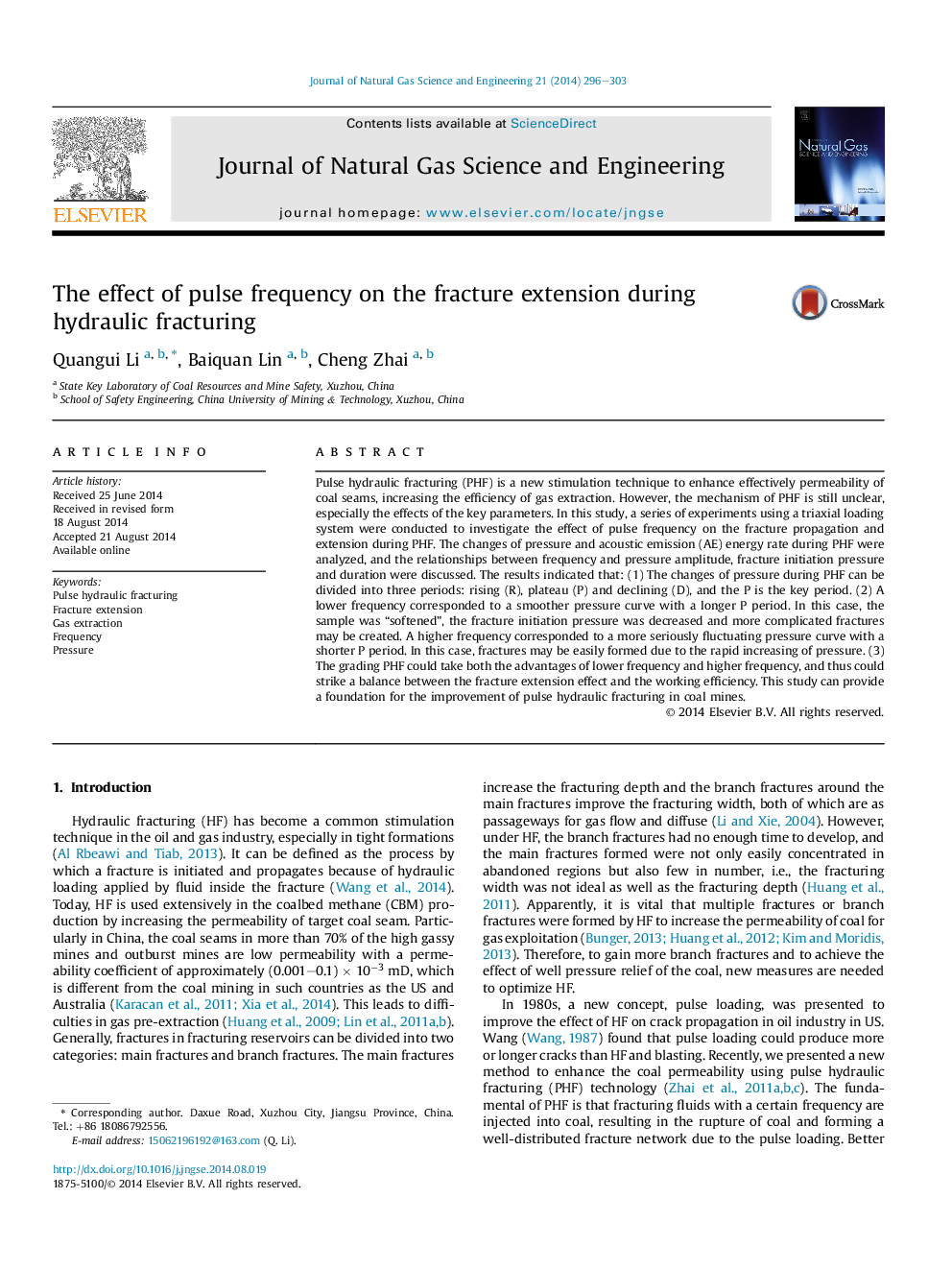| Article ID | Journal | Published Year | Pages | File Type |
|---|---|---|---|---|
| 8129180 | Journal of Natural Gas Science and Engineering | 2014 | 8 Pages |
Abstract
Pulse hydraulic fracturing (PHF) is a new stimulation technique to enhance effectively permeability of coal seams, increasing the efficiency of gas extraction. However, the mechanism of PHF is still unclear, especially the effects of the key parameters. In this study, a series of experiments using a triaxial loading system were conducted to investigate the effect of pulse frequency on the fracture propagation and extension during PHF. The changes of pressure and acoustic emission (AE) energy rate during PHF were analyzed, and the relationships between frequency and pressure amplitude, fracture initiation pressure and duration were discussed. The results indicated that: (1) The changes of pressure during PHF can be divided into three periods: rising (R), plateau (P) and declining (D), and the P is the key period. (2) A lower frequency corresponded to a smoother pressure curve with a longer P period. In this case, the sample was “softened”, the fracture initiation pressure was decreased and more complicated fractures may be created. A higher frequency corresponded to a more seriously fluctuating pressure curve with a shorter P period. In this case, fractures may be easily formed due to the rapid increasing of pressure. (3) The grading PHF could take both the advantages of lower frequency and higher frequency, and thus could strike a balance between the fracture extension effect and the working efficiency. This study can provide a foundation for the improvement of pulse hydraulic fracturing in coal mines.
Keywords
Related Topics
Physical Sciences and Engineering
Earth and Planetary Sciences
Earth and Planetary Sciences (General)
Authors
Quangui Li, Baiquan Lin, Cheng Zhai,
